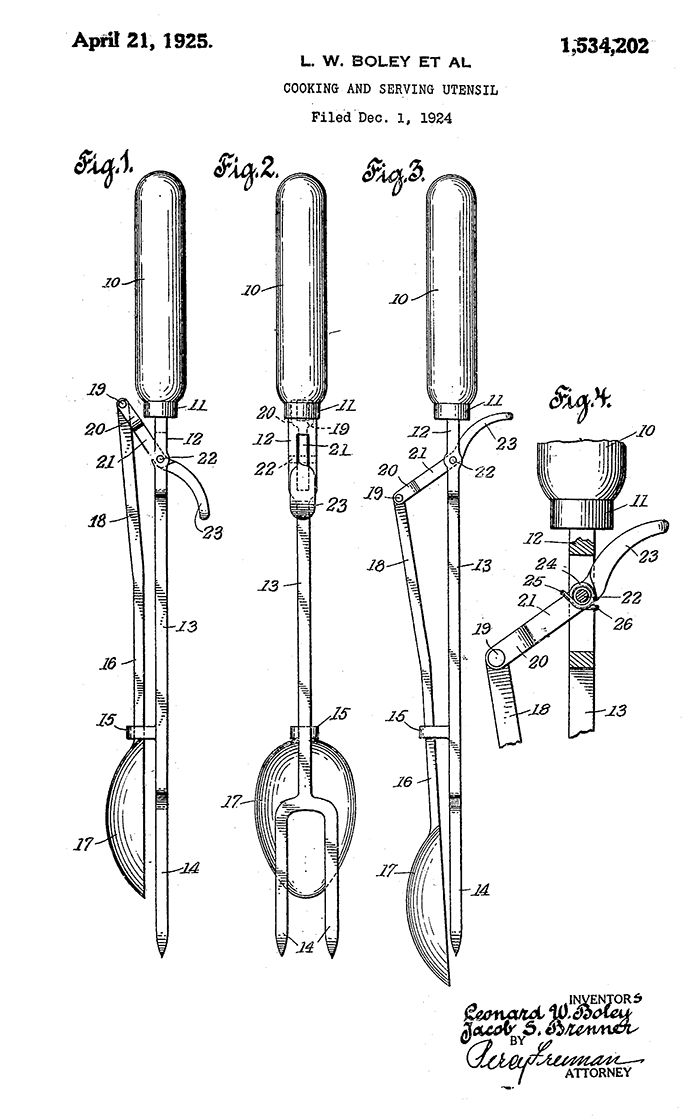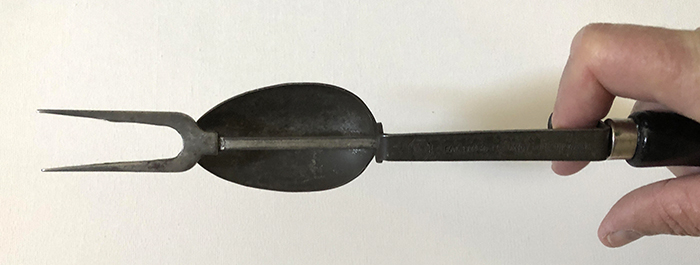
LEONARD W. BOLEY and JACOB S. BRENNER, travel agents working out of Brooklyn in the 1920s, patented a true culinary curiosity.
Patent No. 1,534,202 granted on April 21, 1925 was for a “cooking and serving utensil,” a spring-loaded combination extra large fork and spoon.
“This invention relates to utensils for serving foods, such as meats, game, fish and vegetables, when cooked and before being carved or cut into individual portions,” their patent application said. “Another feature is to provide a spoon shaped member, associated with the shank of the pronger element that is well adapted for use in basting the food article…”
This is basically how it works: The spoon can be pulled back and held, leaving the fork extended to move the cooking meats. The spoon can then be released and it will push the meat off the fork. The spoon can then be used for basting.
It is a good-sized device, 13-inches in length, and is marked PAT. 1925 MFR L&J NOV. CORP. BKLYN N.Y. What this translates to is PATENTED 1925 MANUFACTURED BY L&J (first name initials of the inventors) NOVELTY CORPORATION BROOKLYN, NEW YORK.
The patent application said that it was “not desired to restrict the details of the exact construction shown, it being obvious that changes…may be made without conflicting with the scope of the appended claims.”
And a change in the design was indeed made in the manufacturing. The spring-loaded finger trigger featured in the patent was eliminated with the shaft being pulled into the spring-loaded handle.
The two inventors teamed up in the early 1920s. The Fourth Estate (a weekly newspaper for publishers) reported Feb. 25, 1922: “J. S. Brenner, for twelve years connected with the Brooklyn Daily Eagle…has left the newspaper business, and is now associated with Leonard W. Boley in the business of conducting tours and arranging all forms of travel under the name of Standard Tour and Travel Bureau, Brooklyn.”
The two agents issued a travel catalog later that year “with photographic illustrations” of tours in “Florida, Cuba, West Indies, Bermuda, California Pacific Coast, Hawaii, the Great National Parks, Canadian Rockies and Alaska.”
The story of how two travel agents came up with a culinary device patent is not known, but is probably as strange as the device itself.
_____
(c) 2020, Donald Thornton. All rights reserved.



